Search
Remove Ads
Advertisement
Summary 
Loading AI-generated summary based on World History Encyclopedia articles ...
Search Results
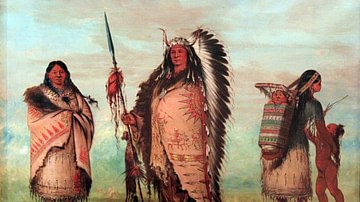
Definition
Sioux
The Sioux are a native North American nation who inhabited the Great Plains region of, roughly, modern Colorado, Montana, Nebraska, North Dakota, South Dakota, and Wyoming. They are one of the many nations referred to as Plains Indians who...
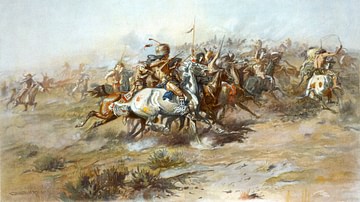
Definition
Great Sioux War
The Great Sioux War (also given as the Black Hills War, 1876-1877) was a military conflict between the allied forces of the Lakota Sioux/Northern Cheyenne and the US government over the territory of the Black Hills and, more widely, US policies...
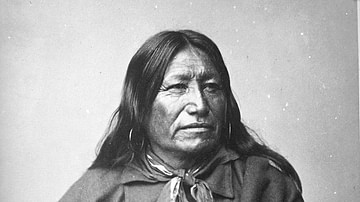
Definition
Sioux Chief Spotted Tail (Eastman's Biography)
Spotted Tail (Sinte Galeska, l. 1823-1881) was a Brule Lakota Sioux chief best known for choosing diplomacy over military conflict in dealing with the US government's policy of expansion in the 19th century. Although he became a respected...
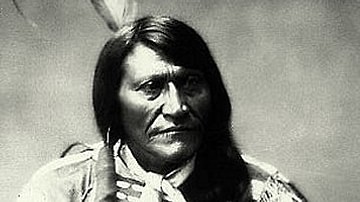
Definition
Sioux Chief Two Strike (Eastman's Biography)
Two Strike (Numpkahapa/Nomkahpa, l. c. 1831-1915) was a Lakota Sioux chief of the Brule band, who fought against the US military consistently from Red Cloud's War (1866-1868) through the Great Sioux War (1876-1877) and was present at the...
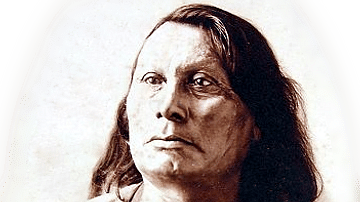
Definition
Sioux War Chief Gall (Eastman's Biography)
Gall (Phizi, l. c. 1840-1894) was a Hunkpapa Lakota Sioux war chief best known for his participation in the Battle of the Little Bighorn in June 1876. He was a close associate of Red Cloud (l. 1822-1909), Sitting Bull (l. c. 1837-1890), and...
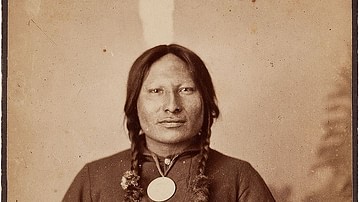
Definition
Sioux Warrior Rain-in-the-Face (Eastman's Biography)
Rain-in-the-Face (Ite Omagazu, l. c. 1835-1905) was a Lakota Sioux warrior and war chief during Red Cloud's War (1866-1868) and at the Battle of the Little Bighorn (1876), after which he became famous as the man who killed Lt. Col. George...
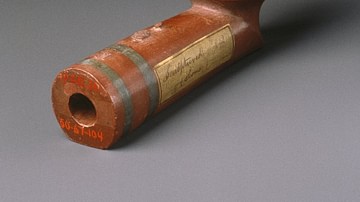
Article
Sioux Ceremonial Pipe
The Sioux ceremonial pipe is a sacred object of the Sioux nation used in the seven sacred rites as well as other observances to connect the people with the Great Spirit (Wakan Tanka), Mother Earth, the spirit world, and each other. Pipe rituals...
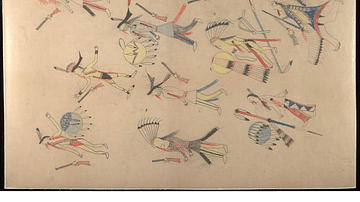
Article
Red Horse's Account of the Battle of the Little Bighorn
Red Horse (Tasunka Luta, l. c. 1822-1907) was a chief of the Miniconjou Lakota Sioux best known for his firsthand account of the Battle of the Little Bighorn (25-26 June 1876) and his 42 ledger book drawings depicting the engagement. The...
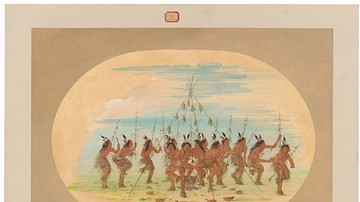
Article
Sioux Story of The Gift of Corn
Corn (maize) was central to the lives of Native Americans across North, Central, and South America. Maize was introduced to North America from Mesoamerica c. 700/900 CE and transformed the lives of the indigenous peoples. Every tribal nation...

Article
Sioux Life Lessons: Iktomi and the Muskrat & Iktomi's Blanket
The Sioux stories known as Iktomi tales concern the trickster figure Iktomi (also known as Unktomi) who appears, variously, as a hero, sage, villain, clown, inept buffoon – or in other roles – but always serves to illustrate some important...